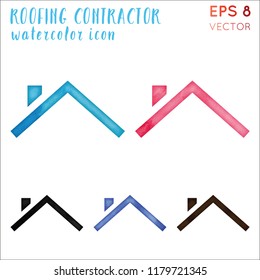Step-By-Step Overview To Readying Your Wall Surfaces For Painting
Step-By-Step Overview To Readying Your Wall Surfaces For Painting
Blog Article
Content Written By-Soelberg Lemming
When you're prepping your walls for paint, it's important to follow a methodical procedure to make certain a remarkable finish. Beginning by taking a look at the wall surface for any damage; this action can make or damage your job. As soon as you've recognized any problems, cleansing the surface properly is crucial, as a dirty wall surface can affect paint bond. After that, you'll need to spot any type of imperfections and apply a guide. But there specify techniques and suggestions that can elevate your preparation game-- let's explore those further to accomplish the very best outcomes.
Assessing Wall Condition
Prior to you get your paintbrush, take a minute to evaluate your wall surfaces' problem. Look for Highly recommended Site of visible damage like splits, holes, or peeling off paint. These flaws can influence how the paint sticks and looks when it's completely dry. If you discover any kind of significant damages, you'll need to prioritize repairs prior to diving into painting.
Look very closely at the appearance of your wall surfaces. Is the surface smooth, or is there structure that might call for unique factor to consider? Smooth wall surfaces typically call for much less prep, while textured surface areas may need more time to paint evenly.
Likewise, take into consideration the previous paint job. If the old paint is shiny, it mightn't enable brand-new paint to stick correctly. You'll need to know if your walls have actually been repainted with oil-based or water-based paint, as this can influence your selection of guide or paint.
Lastly, make note of any kind of moisture problems. If you see indications of water damage or mold, address these issues quickly to avoid further problems.
Cleaning up the Surface
As soon as you've assessed the condition of your wall surfaces, the following step is cleaning up the surface area. Begin by gathering your products: a bucket, cozy water, a moderate detergent, a sponge or fabric, and a scrub brush for tougher areas.
Begin on top corner of the wall and function your means down. Mix the detergent with cozy water in your pail, then dip the sponge or fabric right into the option. Wring it bent on avoid extreme wetness on the wall surfaces.
As you clean, pay attention to areas that could've built up dust, oil, or finger prints. For persistent discolorations, make use of the scrub brush carefully to prevent harming the paint beneath. Wash your sponge or towel frequently in clean water to avoid spreading out dust around.
After cleansing, it's vital to wipe the wall surfaces with a damp towel to remove any soap residue. This step guarantees a smooth surface area for the new paint to abide by.
Permit the wall surfaces to completely dry entirely prior to carrying on to the following prep work steps. This comprehensive cleansing procedure will certainly help develop a fresh canvas for your painting task, making certain the very best outcomes.
Patching and Priming
Patching and priming are important action in preparing your wall surfaces for a fresh coat of paint. Initially, examine your walls for any kind of openings, cracks, or flaws. Use a top notch spackling compound or patching paste to load these areas.
Use the compound with a putty knife, smoothing it out so it's flush with the bordering surface area. Allow https://www.washingtonpost.com/lifestyle/home/diy-painting-advice-experts/2021/02/22/eedd3816-7087-11eb-85fa-e0ccb3660358_story.html to completely dry entirely, and afterwards sand it gently up until it's smooth and even.
When you have actually patched every little thing, it's time to prime. Primer aids secure the patched areas, guaranteeing the paint sticks appropriately and offers a consistent surface. Choose a primer appropriate for your wall surface kind and the paint you'll be utilizing.
Use the guide utilizing a roller for larger locations and a brush for edges and sides. If your covered areas are substantially big or porous, you might wish to use a second coat of primer after the first one dries out.
After priming, let everything dry completely prior to moving on to painting. This prep work won't only enhance the appearance of your wall surfaces however likewise prolong the life of your paint job.
Take your time, and you'll be pleased with the outcomes.
Conclusion
By following these straightforward actions, you can accomplish a smooth and expert surface on your wall surfaces. Start by analyzing their condition, then clean and spot any kind of imperfections before using guide. Bear in mind to enable adequate drying out time and ensure everything is smooth prior to you dive into painting. With the right prep work, you'll set the stage for a stunning transformation in your room. Now, collect your supplies, breathe in the fresh air, and get ready to repaint!
